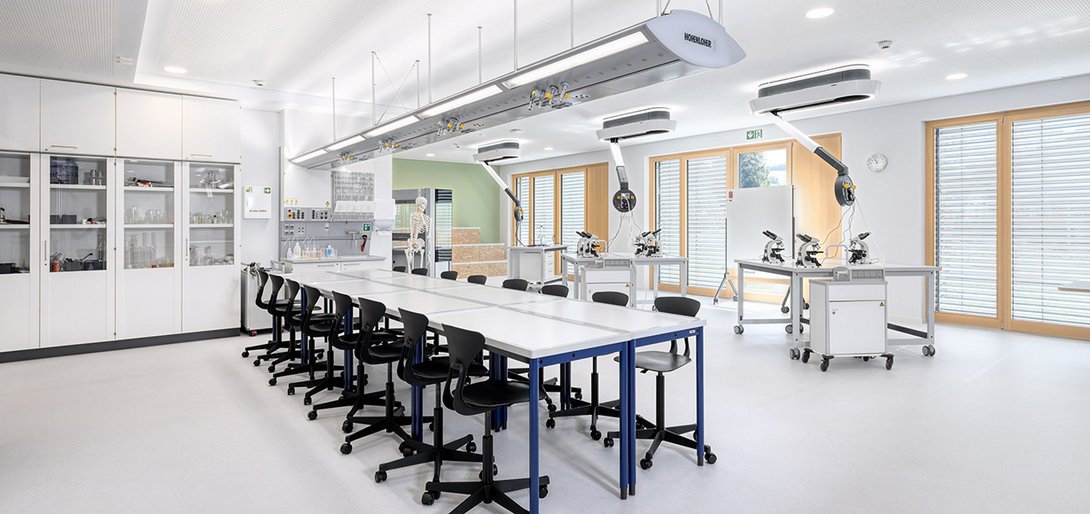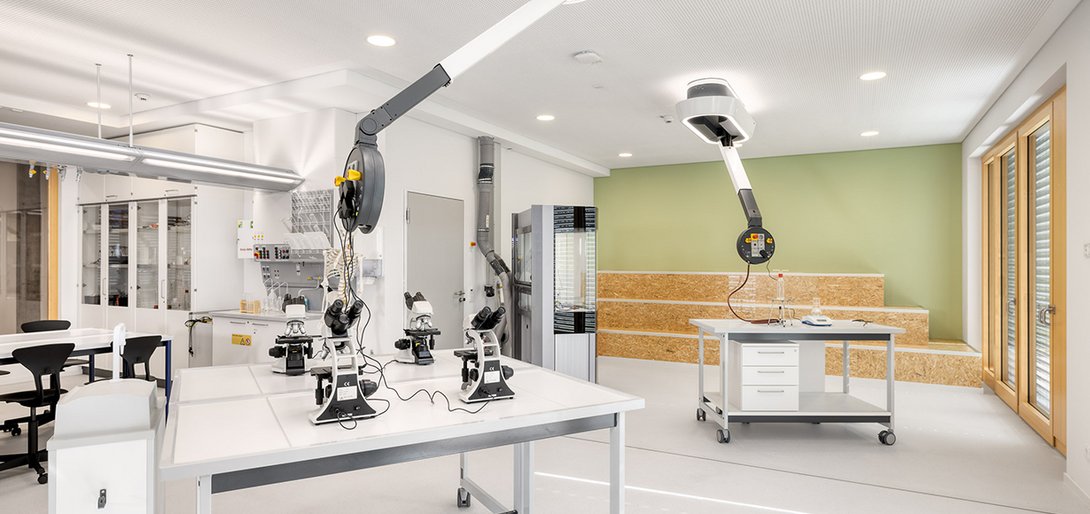Listen to children for the school of the future
Interview with
Stefan Ruppaner, Headmaster Alemannenschule Wutöschingen
How a school's transformation goes depends largely on the pupils. They’re the experts after all! Stefan Ruppaner, Headmaster of the future-focussed and award-winning Alemannenschule in Wutöschingen, believes the recipe for a school’s success is to trust in the children and let them do things. Hohenloher knows him from past projects together, and sat down with him to find out more.
Mr. Ruppaner, you were Rector in Wutöschingen for almost 20 years and transformed the former Hauptschule (type of secondary school) into one of Baden-Württemberg’s first Gemeinschaftsschulen (similar to a comprehensive school), saving the site as a school in the process. Under your leadership, the school was awarded the German School Prize in 2019 and you were recognised as Germany’s most courageous headmaster in 2023. The average Abitur exam grade was 1.7. However, you don't believe the school’s success is down to you. Why is that?
Many people were involved in transforming the Alemannenschule: Reinhard Kahl with his film “Treibhäuser der Zukunft” (“Greenhouses of the Future”), the school’s founder Peter Fratton, my colleagues, our village, the mayor. And above all else, the children. In their own way, they shaped and developed the concept of the school and we never stopped learning from them how to do things better. I'm extremely grateful for that and to have the honour of teaching here. When I'm there today, the thing I always enjoy most is the fun the children have learning and their joy for life.
What were you able to learn from the children in terms of improving your school?
True to the saying “If at first you don't succeed, try, try again,” we achieved a lot from trying things out. Again, it was the experiences of the children that drove us forward as a school. For example, I think about the early days when we switched the first two year groups to independent learning – in 2010, so when we still a Hauptschule. At first, we just trialled it in two subjects: Maths and German. A few particularly quick children suddenly took it upon themselves to work on Geography in the time allotted for German. We thought to ourselves, “This can’t be! Surely not!” But the children saw things completely differently and continued doing it despite the restrictions. It was at that point that we adults realised that the children are the real experts when it comes to their own learning.
What was the result of this insight?
We let them get on with it. Let them learn Geography if they’ve completed their German! Or Biology. Or Art. Because, ultimately, individual and self-organised learning should mean exactly that: that the children themselves decide what they want to learn and when, how they do it and at what speed. So we then started to grab time from other subjects for free learning and finally completely got rid of formal lessons. Certainly, the most far-reaching consequence was that we had to completely rebuild the school. We no longer had class groups so why still have classrooms? First, we knocked through walls everywhere, then did a lot of expansion and restructured things. 920 children need space.
Did the children also have a say when it came to the rooms?
When we introduced the upper secondary school in 2019, that definitely worked! In the years prior to that, planning could get a bit too temperamental and chaotic. This was because we suddenly had an enormous influx of children and had to respond quickly and flexibly. It was then that our architect came up with the perfect solution of the iconic “chicken coops” in the white building that many associate with the Alemannenschule. The learning studio for the upper school in the red building look a little different. The older students actually decided on that themselves.
To what extent?
In the “chicken coops over two floors” and in all other learning studios of year groups 1 to 10, all pupils have their own desk. The upper school students felt they didn't need this. Instead, they wanted a free seating policy to reflect the type of system they know from university or co-working spaces. After all, they often study in groups anyway or via our mobile platform DiLer, which facilitates and supports individual and self-organised study. The way the students saw their learning space saves a lot of space – and we implemented exactly like that.
The driving force for the STEM zone, on which Hohenloher collaborated, was a very human need on the part of the children. Correct?
Correct. We asked the experts in educational spaces, Hohenloher, to help us plan the upper school. We simply had no idea how STEM rooms should be constructed or fitted. Our biggest motivation was to ensure the students felt comfortable there. In a school, that generally very important, but a little more difficult to implement in a scientific setting. Sterile white, cold tiles, rigid laboratory benches: none of us wanted that! Which is why it feels so homely here. Bright, friendly. The spacious 200 m2 area can be easily seen from outside. So everyone knows who’s currently doing experiments, and if anyone wants to, they can join in or use the room at the same time. No student’s natural curiosity is curbed here due to a cramped layout.
So feeling comfortable is one thing. But chemistry areas can also become hazard zones. How do the children manage this?
They ask when they need to use a chemicals cabinet. But otherwise, they’re allowed to learn and discover independently here just like anywhere else. Because that’s what matters if want them to become independent adults. When they first come into the school, all children are automatically trusted. Anyone who abuses this trust will have to make do with less freedom to self-determination. Those who repay this trust on the other hand gain greater freedoms. So the older students have completely internalised personal responsibility.
Heavily involving students in the transformation process. Is this a recipe for future success that you would recommend to other schools?
Yes. Simply because children have an incredible amount of good ideas! When I look back, there’s one time I always recall: I'm crouching between the children on the ground, and asking them what we could do differently, and they just fizz with ideas. When children feel good in their school and have contributed to a successful school life themselves, it changes everything. We don't experience many of the problems other schools face. Vandalism, for example! For one thing, because we clearly don't put pressure on them that needs to be discharged. The children take care of their environment like something treasured because they know it helps them in their learning.
One last question: You are officially one of Germany’s most courageous headmasters. What do you say to critics who doubt your concept?
To worried parents, I say this: If a child enjoys coming to school for years on end, nothing will prevent them from learning a lot. When you feel happy, you learn automatically. Successful people enjoy what they do. And if there are still stumbling blocks here and there, then we can ask the experts on the ground for ideas.


